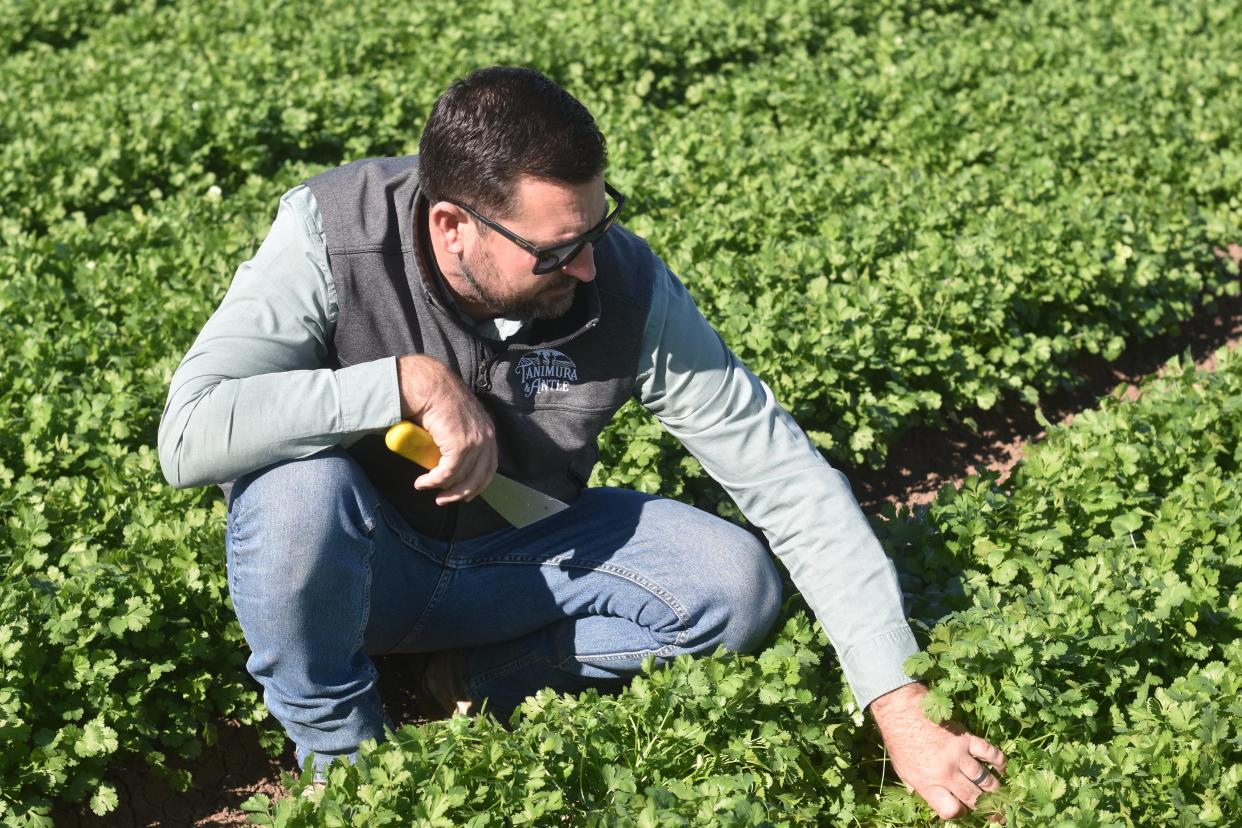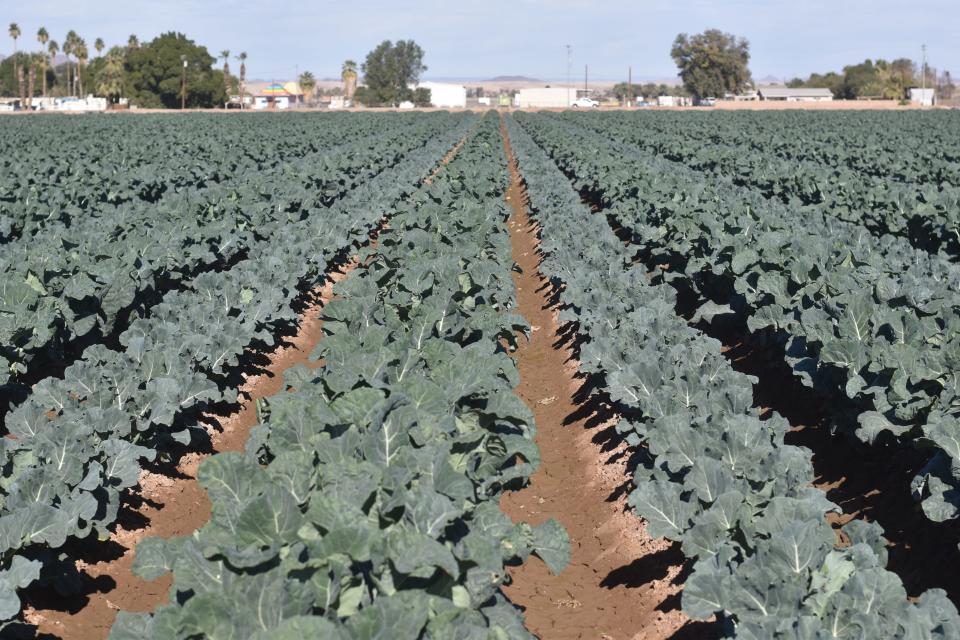'There's an opportunity here': Program paying farmers to use less water yields dividends

Yuma County in the wintertime is a patchwork of green, a collage of light and dark shades punctuated by the plastic blue aprons worn by farmworkers tending the fields. The southern Arizona county grows 90% of U.S. leafy greens in the winter, while the agriculture industry makes up 78% of the state’s water demands.
A program funded by the state and administered by the University of Arizona wants to cut that demand by 20% or more. It's helping farmers in Yuma and across the state switch from water-intensive flood irrigation, which pumps water down small trenches throughout the fields, to other methods that use less water.
The Water Irrigation Efficiency Program launched in February has already saved farmers throughout the state 36,418-acre feet of water, over 12 times the capacity of Tempe Town Lake. An acre-foot of water is roughly enough to serve two to three households for a year.
Steve Alameda, the owner of Top Flavor Farms in Yuma and California, is one of 62 participants in the program's first round. He said it's a “win-win” for farmers and water conservation.
“There's an opportunity here to take advantage of some assistance that's being offered,” he said. “If I can see a way to learn something and while at the same time get paid for it, why not?”
The Arizona Legislature and Governor’s Office in 2022 allocated $30 million for the program's first year, and $15.2 million the following year. The program has already begun accepting projects for 2024.
How does the program work?
The program pays farmers $1,500 per acre, up to $1 million per farm, to help farmers purchase approved irrigation systems like drip and sprinkler irrigation. The participating growers must also commit to reducing water usage by at least 20%.
These water reductions aim to help preserve groundwater in central and southern Arizona and save Colorado River water, according to the university's Cooperative Extension, which runs the program.

Top Flavor Farms used its portion of the grant money to help purchase sprinkler equipment. Alameda switched some crops that use flood irrigation like romaine and iceberg lettuce, broccoli and cauliflower to crops that can be irrigated with a sprinkler system like green beans, spinach, cilantro and parsley.
The company’s farm manager, Mike Clements, said flood irrigation will still occur annually to help leach salt from the soil, but it will be replaced by sprinkler irrigation to water the crops.
While some growers are switching crops for the program, others are growing the same crops with a different irrigation method, according to Ethan Orr, the associate director for agriculture and natural resources and economic development at UA's Cooperative Extension.
The program boasts a significant number of participants in Pinal County, a region whose agriculture sector saw the harshest Colorado River water cuts after water levels in the Central Arizona Project Canal fell significantly last year.
Orr said the program is helping Pinal County growers stay in business by incentivizing them to transition to more efficient irrigation methods. He reiterated that keeping the farms operational will also have a positive environmental effect on the region's largest urban areas.
"By ... keeping those farmers in business, we reduce the dust storms that come up on I-10 and mitigate the heat island effect in Tucson and Phoenix because you have more vegetation around the community," Orr said.
The ‘large amount of water savings’ was a happy surprise
What surprised Orr about the most recent results of the project was how large the water savings have been.
“We were expecting (to save) about 2-3 acre-feet, 20%. But in some cases, we are seeing 40 or 50% water efficiency savings, 4-5 acre-feet,” he said.
Orr said the program is getting more popular.
“Farmers want to stay on this because water is expensive,” Orr said. “If we can work with farmers to save water, we not only save water for the entire state … we also reduce the cost of food for everyone.”
In addition to paying farmers to conserve water, the program also allocated $2 million for research to among other things find better irrigation techniques and more effective ways to measure soil moisture.
Orr said if the program can find more funding, it's likely to continue after it distributes the grant funds.
Reach the reporter at sarah.lapidus@gannett.com. The Republic’s coverage of southern Arizona is funded, in part, with a grant from Report for America. Support Arizona news coverage with a tax-deductible donation at supportjournalism.azcentral.com.
This article originally appeared on Arizona Republic: Program paying Arizona farmers to use less water shows early success

